AM/FM Radio Amasses Voters With 80% Share Of Ad-Supported Audio According To New Westwood One Analysis Of Edison Research’s “Share Of Ear” Political Data For Q2 2019
Edison Research recently released its quarterly “Share of Ear” report, the go-to resource for understanding how Americans consume audio each day. “Share of Ear” quantifies the reach and time spent of all forms of audio.
Here are some key findings from the latest “Share of Ear” Q2 2019 report:
AM/FM radio is the dominant ad-supported audio medium to target American voters
Think Pandora and Spotify are ideal to target voters? Think again.
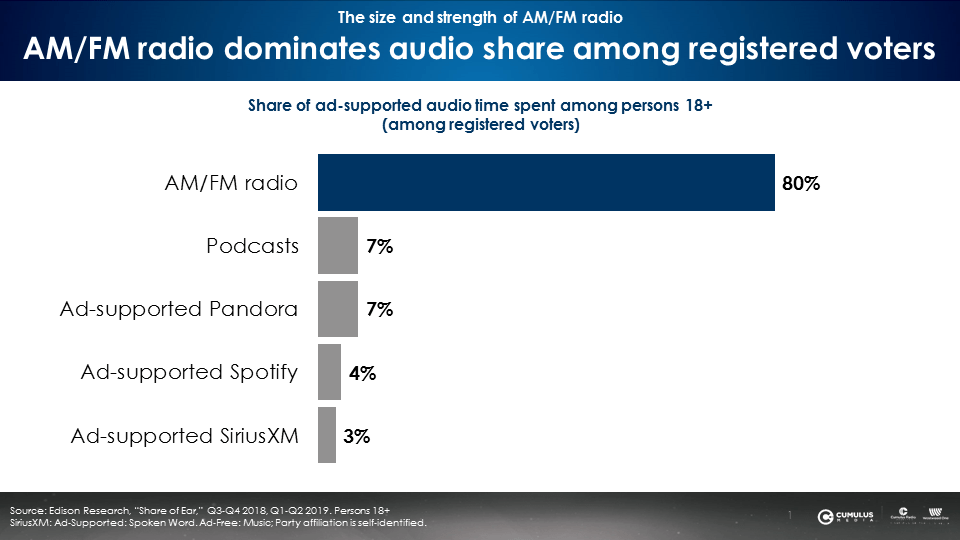
Among registered voters, AM/FM radio’s share of ad-supported audio time spent is a massive 80%, beating ad-supported platforms of Pandora (7%), Spotify (4%), and ad-supported SiriusXM (3%). AM/FM radio is the place to be for political advertisers.
AM/FM radio generates massive ad-supported share and reach among Independents, Republicans, and Democrats
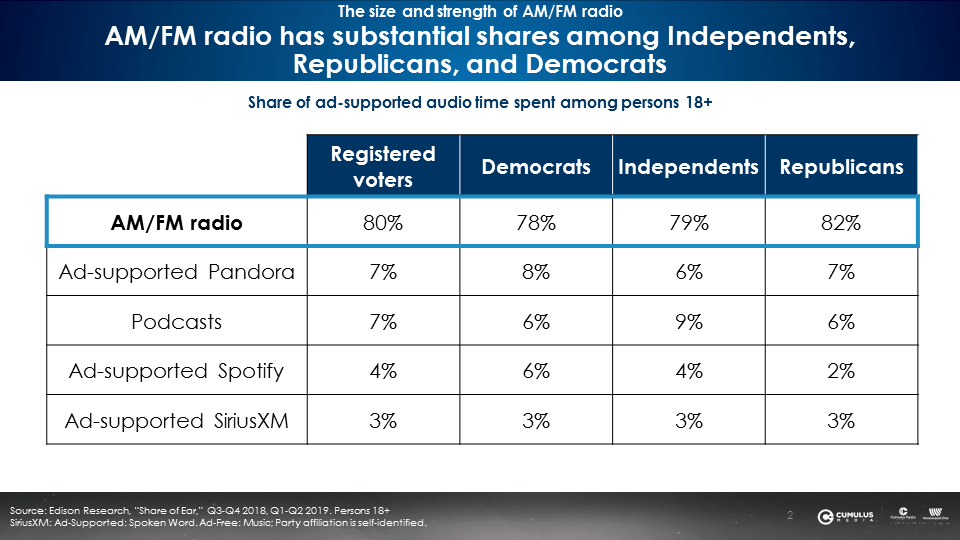
AM/FM radio has the highest share of ad-supported audio time spent among all three major political affiliations: Independents (79%), Republicans (82%), and Democrats (78%). AM/FM radio’s share of audio time spent is massively larger than the ad-supported platforms of Pandora, Spotify, and SiriusXM.
Reach is the number one media factor that powers political impact
To build name recognition, candidate perception, affinity, and voting intent, media campaigns have to reach as many voters as possible. AM/FM radio is America’s number one mass reach media.
AM/FM radio’s daily reach among Independents (68%), Republicans (75%), and Democrats (67%) is much greater than ad-supported Pandora, ad-supported Spotify, and ad-supported SiriusXM where daily reach across the three parties falls under 10%.
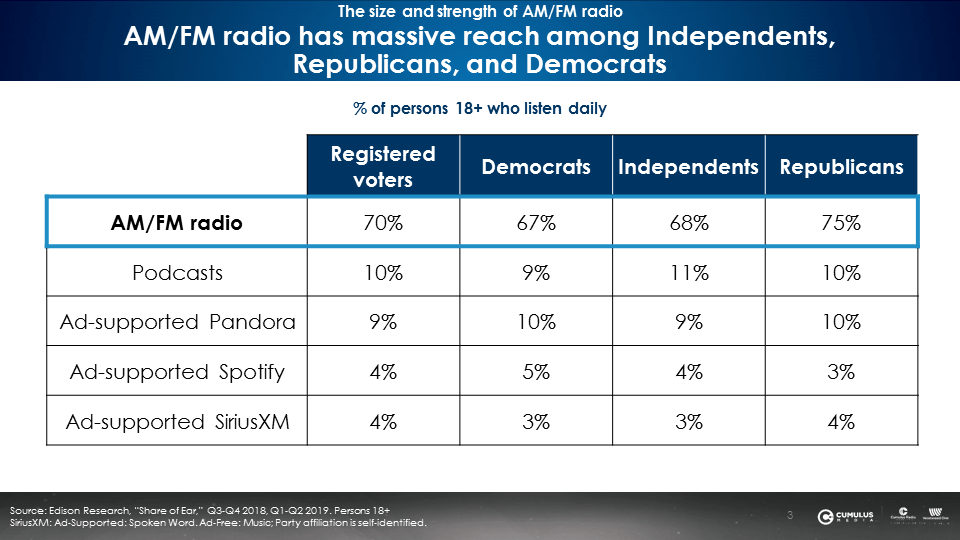
Edison Research’s Q2 2019 “Share of Ear” report proves AM/FM radio is an undeniably strong media force among registered voters. AM/FM radio continues to dominate in share of time spent while other ad-supported audio options struggle to find audiences. Among key political segments, AM/FM radio has immense strength in share and reach among Independents, Republicans, and Democrats.
Pandora’s audio profile has shifted from a heavy 18-34 Millennial skew in 2015 to a greatly reduced middle age audience in 2019, with modest growth among persons 55+
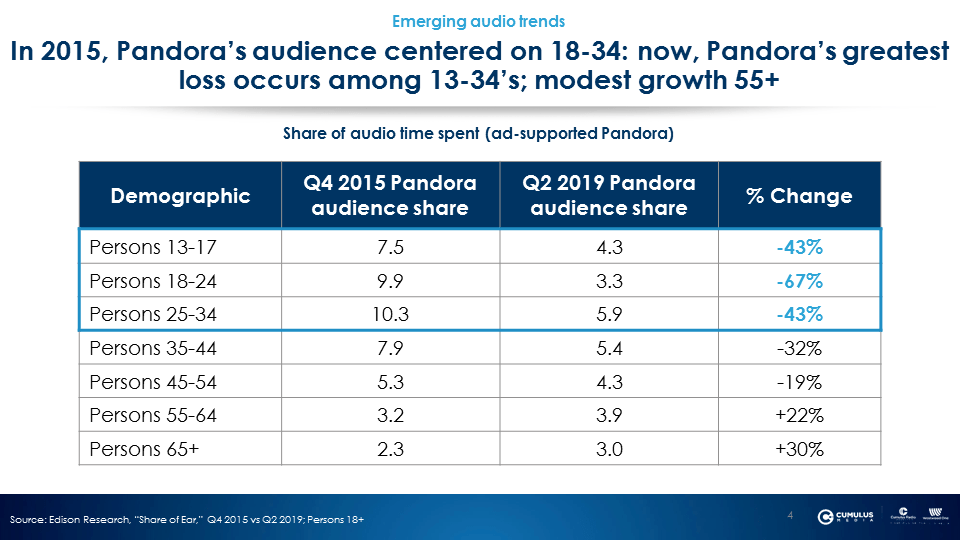
Pandora’s audience profile has completely changed. It has shifted from a heavy 18-34 Millennial skew in 2015 to greatly reduced middle age audience in 2019. Among persons 18-24, Pandora experienced a -67% decline in audience share. Among 25-34, a -43% drop.
Pandora has seen modest growth among Boomers 55+. Persons 55-64 grew from a 3.2 to a 3.9 share in audience. Pandora’s 65+ share increased 2.3 to 3.0.
Young people have completely abandoned Pandora: Spotify’s 18-24 share is six times bigger than Pandora’s
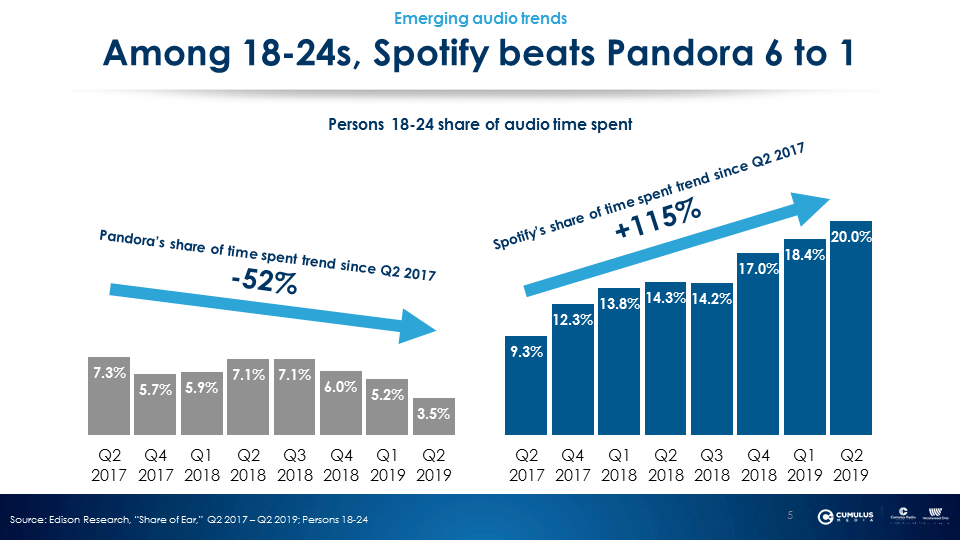
Think Pandora is still hot with young people? Think again. In 2017, Spotify began to surpass Pandora among 18-24s. By Q2 2019, Spotify has beaten Pandora among 18-24s by a massive 6 to 1 margin.
Key takeaways:
- Among registered voters, 80% of all daily time spent with ad-supported audio goes to AM/FM radio
- AM/FM radio generates massive ad-supported share and reach among Independents, Republicans, and Democrats
- Reach is the number one media factor that powers political impact
- Pandora’s audio profile has shifted from a heavy 18-34 Millennial skew in 2015 to a greatly reduced middle age audience in 2019, with modest growth among persons 55+
- Young people have completely abandoned Pandora: Spotify’s 18-24 share is six times bigger than Pandora’s
Pierre Bouvard is Chief Insights Officer at Cumulus | Westwood One.
Contact the Insights team at CorpMarketing@westwoodone.com.